1. The Romans
1.1. The Conquest
1.1.1. 218 BC
1.1.2. Took 200 years
1.1.2.1. Three phases
1.1.2.1.1. Mediterranean Sea
1.1.2.1.2. Meseta
1.1.2.1.3. Cantabrian coast
1.1.3. 19 AD
1.2. Romanization
1.2.1. Hispania
1.2.2. The Iberians and Celts adopted:
1.2.2.1. Language
1.2.2.1.1. Latin
1.2.2.2. Laws
1.2.2.3. Customs
1.3. Roman Cities
1.3.1. Walled
1.3.2. Had a central square: Forum
1.3.2.1. government buildings
1.3.2.2. temples
1.3.2.3. shops
1.3.3. Public buildings
1.3.3.1. Baths
1.3.3.2. Theatres
1.3.3.3. Amphitheatres
1.3.3.4. Circus
1.3.3.5. Aqueduct
1.3.3.6. Triumphal arch
1.3.3.7. Temple
2. Pre-Roman Times
2.1. The Celts
2.1.1. Lived in the northern and central part
2.1.2. Lived in circular walled villages called Forts
2.1.3. Herders and Farmers
2.1.4. Warriors (fighters)
2.1.5. Used metal objects
2.1.5.1. Bronze
2.1.5.2. Iron
2.1.5.3. Weapons
2.1.5.4. tools
2.1.5.5. Jewellery
2.1.6. Did not know
2.1.6.1. To write
2.1.6.2. Money
2.1.6.3. Did not trade with others
2.2. The Iberians
2.2.1. Lived in the southern and eastern part
2.2.2. Farmers and herders
2.2.3. Craftsmen
2.2.3.1. Invented the potter`s wheel
2.2.4. Lived in walled villages
2.2.5. Knew
2.2.5.1. Writing
2.2.5.2. Money (Coins)
2.2.6. Traded with other Mediterranean people
